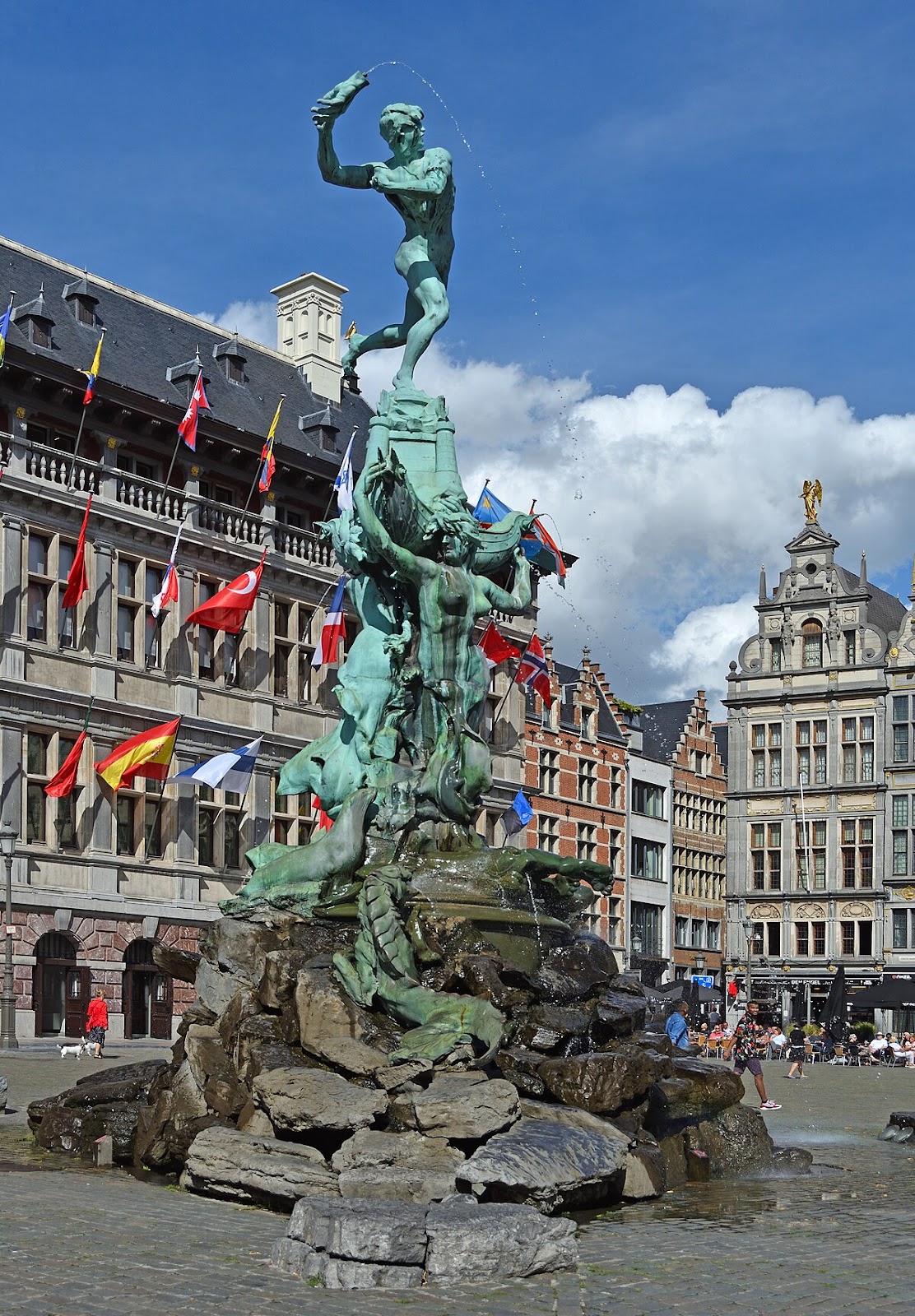At the end of last year Shirley and I took a day off to celebrate our 40 years of marriage and Shirley’s birthday. We spent a day in Antwerp where we first lived when we moved to this country. Antwerp was where we first worked with the church and was where Shirley learned her Dutch (or Flemish as it is). We came to know this city a bit and enjoy visiting again when we get the chance.
One of the well-known sights, among many, in Antwerp is that of Silvius Brabo. This statue is on the market, surrounded by gilded guildhalls, with the cathedral towering over the whole square. Looking at the state you see a classical male in an active pose. Brabo is the man. It looks as if he is in the middle of throwing something. As you look closer you see that he has a hand in his hand. He is about to throw this hand away.
The city of “Antwerpen” (as the Flemings call it) is the city where Brabo is “throwing the hand” (literally “hand werpen” means “hand throwing”). But why in the world is the city named after this action? Whose hand is he throwing and who is he? Brabo is Silvius Brabo. According to the folklore saga he was a Roman soldier who killed the giant Druon Antigon, cut off his hand and threw it in the river Schelde.
This giant had been terrorizing the city by forcing all the shippers to pay a toll before they were allowed to cross the Schelde. If anyone refused, their hand would be cut off and thrown I the river. The legionnaire Silvius Brabo rebelled, fought Antiogon, killed him and threw his hand in the river as a symbol of this victory and the end of the terrorism.
This single legionnaire may have also been the origin of the province of Brabant as well as Aarschot and Arnhem (he supposedly shot an eagle (“arend”) that had its nest in the eagle’s nest (“arend heem”). Of course this all is mostly a saga, with little historical truth to it.
There was a Roman settlement in the area. But the city name could also have come from the Germanic “anda verpa” which would refer to the land in the curve of the river. It could also have come from “on the wharf” (in Flemish of course). The legend of the giant Antigon probably came from finding whale bones in the river.
Still, we enjoy visiting the city, walking in the market and visiting the various tourist areas. There is a castle on the river. The cathedral is famous to Japanese tourists because of the story of a dog. And we simply like visiting church family and reminiscing about our time here when we first arrived.

No comments:
Post a Comment